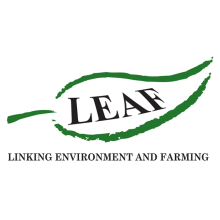Soil: Improving Structure and Function
LEAF Demonstration Farmer Chris Baylis discusses measures put in place to help improve soil structure and drainage on his farm with agricultural advisor Philip Wright.
Resource explained
In this video, agricultural advisor Philip Wright of Wright Resolutions and farm manager within Sir Richard Sutton Estates Chris Baylis look at soil management on a few of the fields on the LEAF Demonstration Farm. They discuss the management measures that have been put in place as part of Integrated Farm Management. Their conversation covers: the important role of earthworms in helping to improve soil structure; the improved drainage and cultivation implications of improved soil structure; the beneficial effects on soil structure and soil organic matter (SOM) levels of introducing cover crops into rotations; improving the farm drainage system and knock-on benefits in relation to drilling and improved black-grass control; the importance of waiting for soil to dry out before working it, avoiding compaction; and the impacts of increasing SOM on soil erosion, run-off and soil structure.
Findings & recommendations
- Good soil practices are helping improve soil management on the farm and therefore reducing risks of negative impacts on water quality.
- Soil is one of the greatest assets for a farming business.
- Encouraging earthworms through improving SOM will help make land less susceptible to compaction, easier to cultivate, and more ready to withstand heavy rainfall.
- Incorporating cover crops in your rotation can bring increased organic matter levels and nutrients, and improved drainage and water retention.
- Improving the drainage system on your farm and using cover crops and slowing increasing SOM will bring big benefits in terms of the soil being less prone to erosion and run-off and being in a workable state more quickly. This will increase your options of when to carry out drilling, help with weed management, and save you time and money.
- It is very important to wait for soil to dry out (beneath the surface layer) before working it – get a spade out and have a dig, check what it’s like all the way through the profile. You can save cultivation costs if you can identify exactly where the problem is – always good to dig!
See here for more about the LEAF Demonstration Farm Chris Baylis manages.
Photo credit: LEAF. All Rights Reserved

